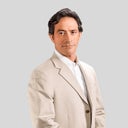Posted underFacial Fat Transfer q&a
How Long Before Final Results from Fat Transfer in Tear Trough Can Be Seen?
I am considering Fat Transfer in the tear trough and I have been told by several doctors that they over correct the area due to the expected amount of fat that will die.How long will it take for the overcorrected fat to be absorbed so I know when I look in the mirror that that is the final result? Also if there is too much of an overcorrection what is the best method to reduce the overcorrection of fat?
Answers (8)
From board-certified doctors and trusted medical professionals
Dr. Ron Shelton, MD

Dr. Ron Shelton, MD
Dermatologic Surgeon, Board Certified in Dermatology
Answer
Dr. Siamak Agha, MD, PhD, FACS

Dr. Siamak Agha, MD, PhD, FACS
Board Certified Plastic Surgeon
Answer
Dr. Otto Joseph Placik, MD

Dr. Otto Joseph Placik, MD
Board Certified Plastic Surgeon
Answer
Dr. Michael A. Persky, MD

Dr. Michael A. Persky, MD
Facial Plastic Surgeon
Answer
Dr. Samir Shureih, MD
Dr. Samir Shureih, MD
Board Certified Plastic Surgeon
Answer
Dr. D.J. Verret, MD
Dr. D.J. Verret, MD
Board Certified Facial Plastic Surgeon
Answer
Dr. Darryl J. Blinski, MD
Dr. Darryl J. Blinski, MD
Board Certified Plastic Surgeon
Answer
More Facial Fat Transfer Questions
See all Facial Fat Transfer Q&AWE SEND PRETTY
EMAILS
What’s trending? Who’s turning heads? Which TikTok myths need busting? We’ve got you. No fluff, no gatekeeping—just real talk. Get our free, unfiltered newsletter.